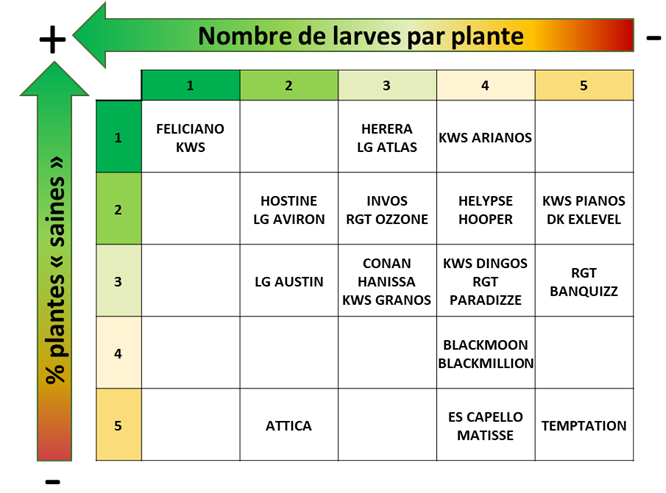Varieties to help control autumn pests: results of the 2021-2022 campaign
Varieties to help control autumn pests: results of the 2021-2022 campaign
To make its choice of variety, Terres Inovia evaluates varieties each year in post-registration, yield potential, resistance to phoma, sensitivity to lodging or elongation, etc. Since 2018, the new criteria of vigour, presence of flea beetle larvae in the plant and observations of symptoms in the spring are taken into account in the evaluation of varieties.
1. VIGOUR
Better vigour for a stronger plant
A rapid and homogeneous vigour can allow better resistance to climatic hazards and better support the pressure of pests such as flea beetles. The evaluation of differences in vigour between varieties is carried out using aerial photography (drone) on certain variety trials in the Terres Inovia network. Two vigours are distinguished: initial vigour, which is the soil cover at the 3/4 leaf stage, and autumn vigour, which is the speed of soil cover in the autumn.
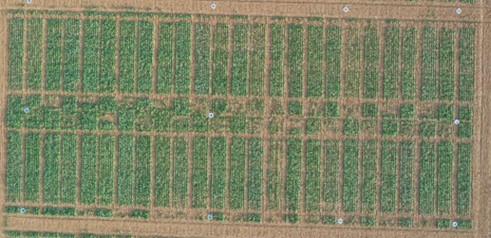
Aerial drone photo for calculating vigour (R. Lange)
Significant differences in vigour between varieties
For the 2021-2022 season, 6 to 7 trials are usable. For both types of vigour, the varieties are classified in 4 statistical groups. KWS ARIANOS has the best initial and autumn vigour. ATTICA, HERERA, KWS DINGOS, KWS PIANOS and RGT PARADIZZE are also in the statistical groups with the highest vigour (see tables below). FELICIANO KWS, HOSTINE, LG AVIRON, RGT OZZONE and HELYPSE are in statistical groups with good vigour but weaker than the varieties mentioned above. The other varieties are in intermediate groups. The varieties DK EXLEVEL and RGT BANQUIZZ have the lowest vigour in the trials of the year.
Statistical groups for initial vigour and autumn vigour of varieties evaluated in the 2021-2022 season (from 1 to 4; 1: varieties with the best average vigour in the trials)
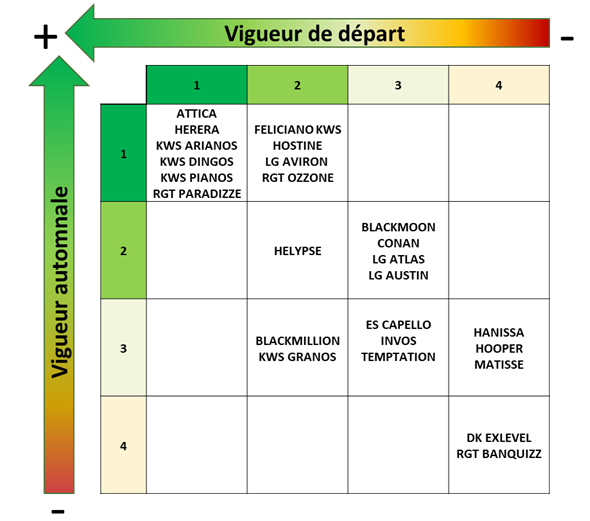
A relationship between initial vigour and autumn vigour can be observed. A variety with rapid growth at the beginning of the cycle tends to maintain this dynamic throughout the autumn. However, this relationship is less strong for certain varieties or in certain trials.
Based on the results of the campaign and the 3 previous years, a varietal ranking from 1 to 9 (9: very vigorous) of the varieties evaluated is available on www.myvar.fr.
2. PESTS
Better pest behaviour to reduce the risk of yield loss
To evaluate the behaviour of varieties towards flea beetle or terminal bud weevil larvae, two observations are made: counting the number of flea beetle larvae in the plant with the Berlèse method and observing the proportion of plants with symptoms (bushy habit, dwarfed and/or deformed plants)
Less flea beetle larvae in the plant to reduce the risk of developing symptoms
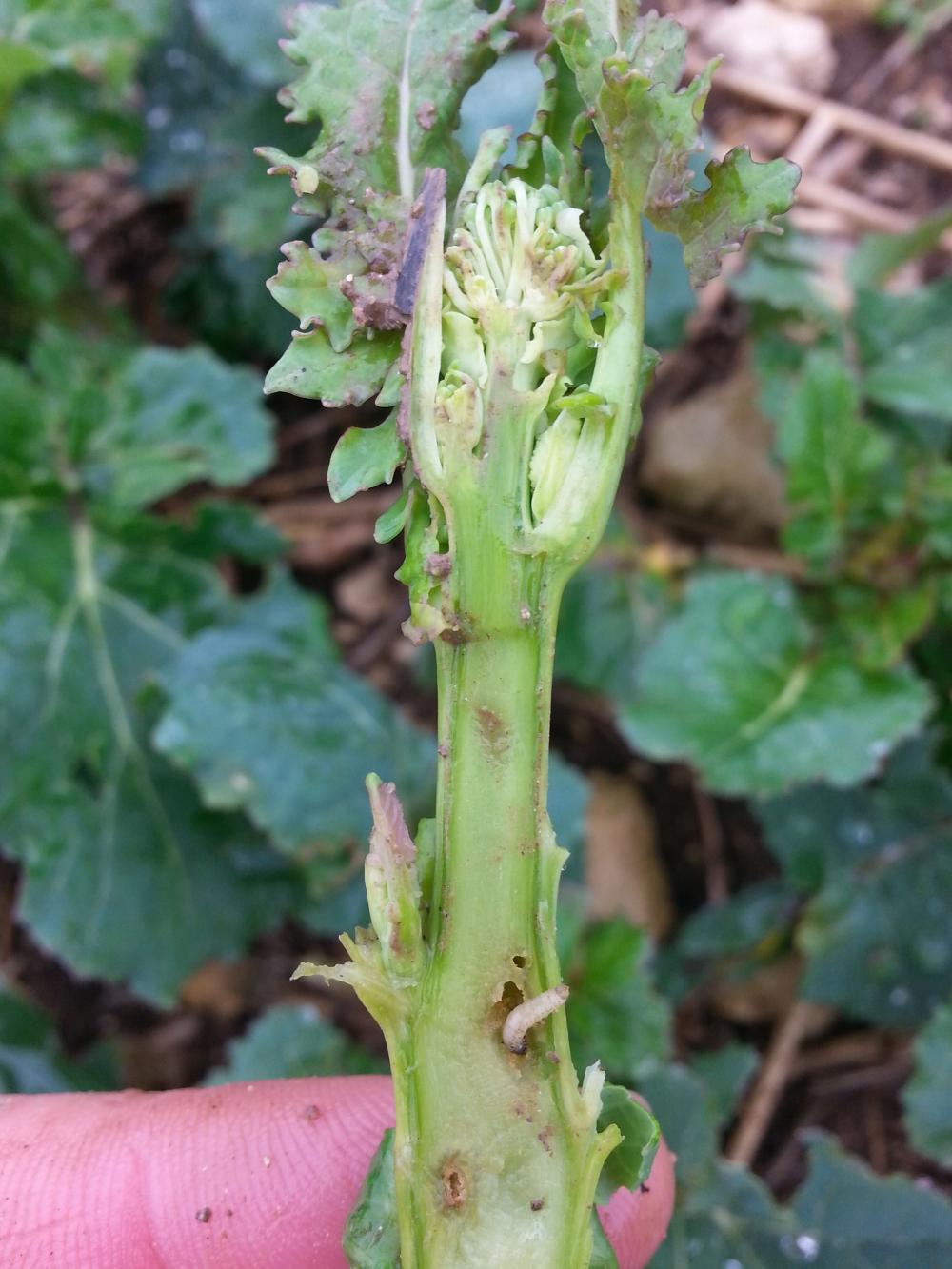
Fewer symptoms to reduce the risk of yield loss.
La présence de symptômes sur la plante au printemps n’a été observée que dans 3 essais. Deux de ces essais ayant 3 répétitions, l’analyse des résultats a permis de mettre en évidence des différences variétales significatives entre variétés. La différence de pourcentage de plantes sans symptôme entre la moins bonne variété et la meilleure est en moyenne est de 40 % en 2022.
The presence of symptoms on the plant in spring was only observed in 3 trials. Two of these trials had 3 replicates and the analysis of the results showed significant varietal differences between varieties. The difference in the percentage of symptom-free plants between the worst and the best variety is on average 40% in 2022.
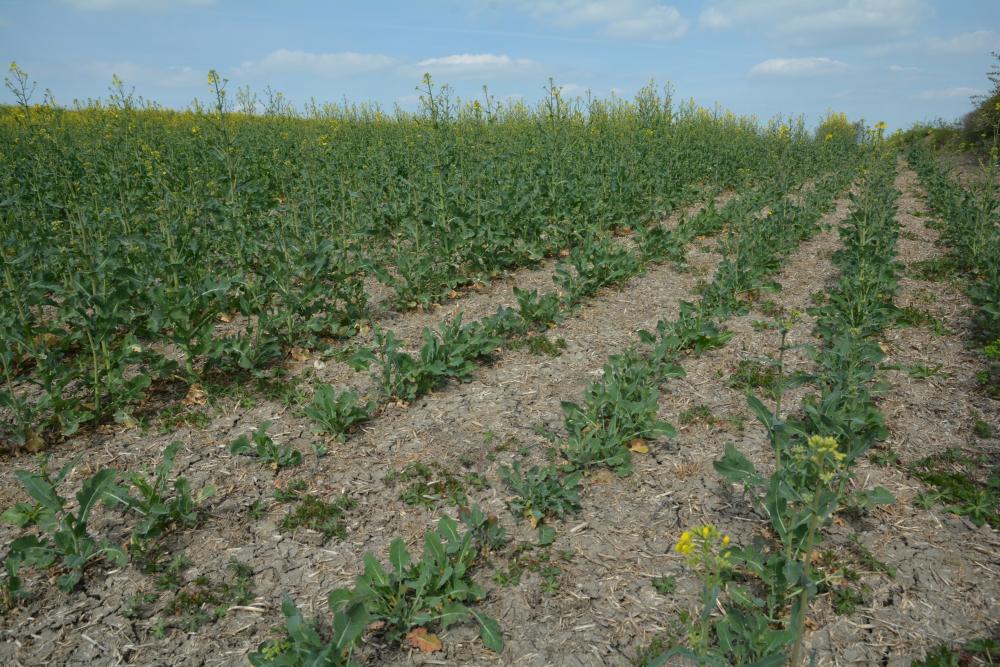
Healthy and bushy oilseed rape due to larvae in the plants
Some varieties with a decrease in larvae and symptoms
Lorsque ces critères sont couplés (cf. tableau ci-dessous), le témoin FELICIANO KWS se retrouve pour la troisième année consécutive en tête avec le plus faible nombre de larves et la plus forte proportion de « plantes saines ». Les variétés LG AVIRON et HOSTINE ont également de très bons résultats sur 2 ou 3 ans. Les variétés HERERA, INVOS, LG AUSTIN, LG ATLAS et RGT OZZONE ont de bons résultats mais inférieurs aux variétés précédement citées. A l’inverse, le témoin TEMPTATION possède un nombre de larves par plante globalement plus important et un taux de plantes saines plus faible. Les autres variétés ont des résultats intermédiaires. Ces résultats sont bien évidemment à prendre avec du recul du fait de la présence faible de larve d’altise cette année. Ils seront à conforter avec les résultats de rendement en fin de campagne ainsi que par une autre année d’évaluation.
When these criteria are combined (see table below), the control FELICIANO KWS is for the third consecutive year in the lead with the lowest number of larvae and the highest proportion of "healthy plants". The varieties LG AVIRON and HOSTINE also have very good results over 2 or 3 years. The varieties HERERA, INVOS, LG AUSTIN, LG ATLAS and RGT OZZONE have good results but are inferior to the above mentioned varieties. On the other hand, the control TEMPTATION has a higher overall number of larvae per plant and a lower rate of healthy plants. The other varieties had intermediate results. These results are obviously to be taken with hindsight due to the low presence of flea beetle larvae this year. They will be confirmed with the yield results at the end of the season and by another year of evaluation.
Statistical groups of the analysis of the results of the number of larvae per plant and the percentage of "healthy" plants of the varieties evaluated in 2022 (from 1 to 5; 1: varieties with the best behaviour).
